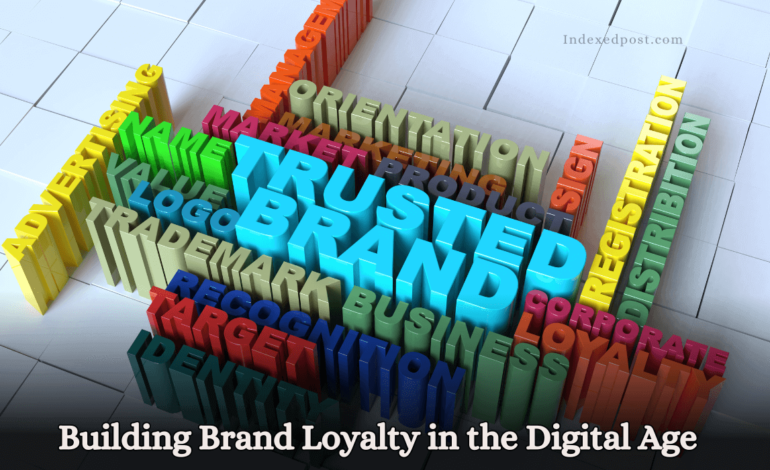Building Brand Loyalty in the Digital Age: Strategies And Case Study

The digital age is in full swing today which brings even more complexity to the task of developing brand liking. It is, however, one of the most critical skills a company may need. It is crucial for businesses to have effective strategies as the clients are overwhelmed with myriad options and ads on a daily basis. Therefore, this necessitates the need to know how to draw clients and hold on to them. Here, we will walk through different tactics and practical examples that will demonstrate the strategies that aim to get higher loyalty for brands by digital means.
Brand Loyalty
Though strategy is coming up first, one has to first understand brand loyalty. Brand loyalty does not imply just a pleasant experience when working with a brand, it refers to the patrons’ deep-burrowed confidence with the trademark and emotional connection they develop. It is this loyalty that captivates the hearts of consumers and repeatedly makes them customers; persons they are brand ambassadors, lastly, this loyalty leads to the profitability of businesses.
Making the Development of Brand Loyalty Strategies.
1. Personalized Customer Experience
Now, consumers look for personalized experiences that meet their expectations and suit their needs by applying digitization. With the use of big data analytics and AI technologies, businesses are able to access data drawn from customers’ behaviors and preferences, which gives them the possibility to customize things like digital content, recommendations, and offers. Brand managers can deepen customer relationships and facilitate loyalty by showing that they care and appreciate their loyal followers, thereby creating more emotional bonds with the brand.
Social media platforms have evolved considerably over time as brand tools to get much closer to their audience and interact with them in more personal ways. Brand involvement in conversations, comment interlocutions, and message sharing, user-generated content promotion creating a feeling that the brand belongs to followers are among the ways to build followers’ sense of community. This engagement creates a thirst for rivalry as customers feel like they migrate from tent to tent just like the pedestrian aborigines.
3. Loyalty programs to attract customers
Customers will come back for more purchases because having loyalty programs and rewards is an established and target-hitting strategy. Digital reward systems give more freedom and promptness by allowing clients to follow their price in the desired means of earning and withdrawal such as applications and smartphones. Through creating extricate discounts, perks, and VIP treatment for loyal customers, businesses can bond with their customers and increase their repeat buying.
4. Consistent Brand Messaging
Consistency, a very important factor, holds the key to the brand-building process to attain loyalty among them. It is the adventure that takes game customers from the website design to the advertising campaigns and customer interactions that demand to develop and hold a consistent brand image and message across all touchpoints. Uniform branding has an impact on trust and increasing familiarity hence brand becomes the first choice for customers in comparison to other companies.
5. Exceptional Customer Service
With regards to the digital era, giving a customer the top service is more vital today than in the past. Customers have the opportunity to amplify their voices through social media and online review platforms. Therefore, brands have to concentrate on offering quick responses and resolving issues as fast as possible. Adding another form of communication in the details of interaction will also help to support this idea. Interacting and focusing more than expected and therefore the existing problems are resolved for the customers at the moment of time and long-term loyalty and trust is achieved.
Case Studies
-
Nike:
First and foremost, the timeless campaign “Just Do It” by Nike has become a striking example of how aims can influence and engage customers and drive loyalty. By manifesting the spirit of willpower and self-empowerment, Nike forms a strong attachment to the athlete’s soul following them and witnessing the transformation and development of the brand.
-
Starbucks
Starbucks’ Rewards Program has really helped in increasing the appeal of Starbucks’ loyal customers and considering more repeat purchases of their coffee. Amongst all these features, like mobile ordering, personalized deals, and a sure redemption process, Starbucks offers all and makes it a convenient option for customers to think of it as a brand of choice over other competitors.
-
Amazon
Amazon has demonstrated the ability to make personalized service and convenience implicit features of its operations earning the organization unmatched customer loyalty. Utilizing features composed of, among others, ‘One-click purchasing’, ‘Personalized product recommendations’, and alarmingly rapid and accurate shipping, Amazon arises as the top choice of millions of Internet shoppers worldwide.
Conclusion
Today’s digital age has therefore called for a more comprehensive strategy to engender customer loyalty which contains personalized experiences, a high level of consumer engagement, a loyalty reward system, consistency, and quality customer-oriented service. Through learning and implementing these strategies, brands now know better ways of interacting with their customers, and building long-term relationships thereby, driving repeat business while leaving their competition behind.




